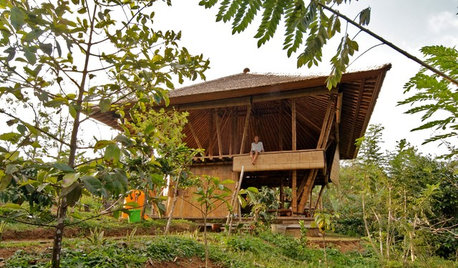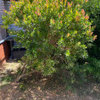Environmental impacts of Eucalypts in USA
gregaryb
15 years ago
Related Stories

ARCHITECTUREDesign Workshop: How to Make a Home Sit Lightly on the Land
Piers, cantilevers, towers and more can help minimize a home’s environmental impact on its site
Full Story
PRODUCT PICKSGuest Picks: 20 Earth-Friendly Accessories for Baby
Get your nursery in top ecofriendly form with essentials and extras that have organic cred or a low carbon footprint
Full Story
KITCHEN DESIGNEco-Friendly Materials: Kitchen Countertops
Going green in the kitchen opens the door to unusual countertop materials that are beautiful, durable and kind to the planet
Full Story
FLOORSWill Cork Float for Your Bathroom Floor?
Get the facts on advantages, disadvantages, costs and installation to see if a cork bathroom floor is right for you
Full Story
KITCHEN DESIGNHow to Choose and Use Ecofriendly Kitchen Appliances
Inefficient kitchen appliances waste energy and money. Here's how to pick and use appliances wisely
Full Story
KITCHEN DESIGNGet a Grip on Kitchen Cabinets With the Right Knobs and Pulls
Here's how to pair the right style, type and finish of cabinet hardware with your kitchen style
Full Story
LIGHTINGWhat to Know About Switching to LED Lightbulbs
If you’ve been thinking about changing over to LEDs but aren't sure how to do it and which to buy, this story is for you
Full Story
KITCHEN CABINETSChoosing New Cabinets? Here’s What to Know Before You Shop
Get the scoop on kitchen and bathroom cabinet materials and construction methods to understand your options
Full Story
GREEN BUILDINGOff the Grid: Ready to Pull the Plug on City Power?
What to consider if you want to stop relying on public utilities — or just have a more energy-efficient home
Full Story
MOST POPULARMy Houzz: Open-Air Living in the Mountains of Bali
Community, jaw-dropping beauty and sustainability come together in a tropical paradise for a London expat
Full StorySponsored
More Discussions




gregarybOriginal Author
gardenlen
Related Discussions
Monsanto's Roundup Triggers Over 40 Plant Diseases and.......
Q
Carbon footprints and environmental responsibility
Q
Terminator is Back
Q
Costs of Pesticides, Environmental and Economic
Q
gregarybOriginal Author
bodiCA
trish_g
citrange2
philinsydney1
gardenlen
philinsydney1
mecha-wombat
trish_g
bahia
gregarybOriginal Author
trish_g
bahia
gregarybOriginal Author
gregarybOriginal Author
gregarybOriginal Author
bahia
gregarybOriginal Author
bahia
gregarybOriginal Author
bahia
gregarybOriginal Author
bahia
gregarybOriginal Author